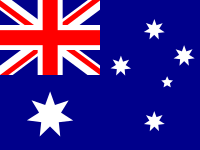Route opportunities for secondary cities in Japan

A review of historical and potential catchments for the Australia, Hong Kong and Philippines to Japan flight market, show opportunities for new routes to secondary cities in the short and medium term.
Key Insights
1. Philippines has the greatest potential to grow traveller numbers, including secondary cities.
2. Australia has some potential to grow in the medium term, as first-time travellers become repeat travellers, especially with the introduction of long range narrow body aircraft such as the Airbus 320XLR. Unlike Hong Kong, a significant % of the population who have never visited Japan, hence supporting flights to primary cities (i.e. Tokyo/Osaka) in the medium term as well.
3. Hong Kong has a low to moderate potential as secondary city flights are already well established. However, more flights could be introduced by accessing the Greater Bay catchment as well as behind traffic from other countries using Hong Kong as a hub. An increase in frequency would make secondary cities more attractive. For example, Hong Kong – Naha, Okinawa has multiple flights per day. This creates more options and could decrease costs (in money or frequent flyer miles).
Challenge
Since the founding of Japan Travel in 2011, inbound tourism had grown by over 500% from 6M (2011) to 32M (2019). However, the social economic benefits were concentrated in the primary cities, including the capital city (Tokyo) as well as the most famous tourism areas (Kyoto and Osaka), particularly with visitors from other continents.
This paper is based on the hypotheses that:
1. First time tourists are more likely to visit Tokyo and Kyoto/Osaka than secondary cities (e.g. Fukuoka, Nagoya, Okinawa), based on booking data at Japan Travel.
2. Repeat tourists are more willing to visit secondary cities as they have already visited the primary cities.
First time and repeat travellers
The % of first-time travellers (as per those on Japan landed flights for these 3 countries are shown below.
There could be 2 conclusions drawn to this:
1. Australia has a high rate of first-time visitors to Japan. So, flights to main cities (Tokyo/Osaka) are likely to be well supported. On the other hand, proposed direct flights from Australia to secondary cities are less likely to be supported. This is true unless they are seasonal flights to ski destinations, like Sapporo. Australians owning holiday homes near Sapporo supports repeat travel to this destination.
2. While there is a risk that Hong Kong nationals will soon exhaust their Japanese destinations to visit (30% of Hong Kong visitors to Japan, are on their 10th or more visit), there is also two factors to consider:
a. Some take family and friends on subsequent trips, and therefore acting as a defacto tour guide for their group. Additionally, event and seasonal travel such as marathons, autumn foliage viewing or festivals, may create a desire for repeat travel. So, many travellers have not exhausted their desire to travel to Japan.
b. There may still be some Hong Kong nationals who have never been to Japan. Friends or family could influence them to go in the future.
3. Philippines is in between. The majority of Japan bound travellers, are on their second or subsequent visit, making it easier to market secondary city destinations.
Table 1 - % of passengers on Japan inbound flights, based on whether they are first time or repeat visitors in 2019 calendar year.
|
Inbound Source |
1st time to Japan (%) |
2nd to 9th times (%) |
10th to 19th times (%) |
20+ times (%) |
|
Australia |
66 |
32 |
1 |
1 |
|
Hong Kong |
12 |
58 |
19 |
11 |
|
Philippines |
42 |
55 |
2 |
2 |
Source - https://statistics.jnto.go.jp/en/ 2019
Market Potential
We estimated the potential number of travellers from each country to Japan, using the % of the population likely to have disposable income for a trip, and also considering the nature of competing domestic destinations and ease of access for direct flights.
Table 2 - Estimated potential and untapped population for the Japan inbound market
|
Japan inbound source |
Population (M) |
Potential % able to travel |
Potential % (M) |
Actual no of travellers (M) - 2019 |
Untapped = Potential – Actual (M) |
|
Australia |
27 |
50% |
13.5 |
0.6 |
12.9 |
|
Hong Kong |
7 |
75% |
5.3 |
2.3 |
3.0 |
|
Philippines |
117 |
5% |
5.9 |
0.6 |
5.3 |
Source (Actual traveller count) - https://statistics.jnto.go.jp/en/ 2019
For Australia, we assigned a low 50% potential rate despite its high nominal GDP per capita of 65,526 USD in 2022 (~100,000 AUD). This is because a significant part of the population may not have sufficient disposable income for medium/ long haul travel. This is especially true for those with high living costs from raising children, mortgages, and rent.
In a study from Energy Consumers Australia in 2025, 50% of households earning less than $150,000 AUD per year struggle to have sufficient savings to travel. For Brisbane, this represents 27% of all households, leaving 73% who can afford to travel. There is also a small but unknown % of households earning more than $150,000 AUD that do not have sufficient savings to travel.
Also, 40% of Australians reside more than 75 km from an airport with a direct flight to Japan (i.e., Cairns, Brisbane, Sydney, Melbourne and Perth). This makes it harder to reach an airport with a direct flight to Japan. For example, Adelaide, Hobart, Canberra, and the Gold Coast do not have a direct flight to Japan. Australia also has attractive and diverse domestic destinations and is farther from Japan than Hong Kong and the Philippines.
For Philippines, the % is based on the population that is “upper middle class” that are earning more than 24,000 AUD per year. However, people who earn less than that could still travel, either saving over multiple years, or having their trip partly/ fully paid by another person. Hence Philippines has a very high potential to grow the number of travellers. Indeed, Feb 2024 saw 65,000 travellers, close to doubling the 35,000 travellers from Philippines to Japan in Feb 2019.
Regional Destinations
While there is a link between direct routes and tourism numbers, there is a “chicken or egg” question asked with new routes, is whether demand drives supply for a new route, or whether a new route (supply) will drive additional demand. Of course, the answer is an element of both.
Looking at Hong Kong, it has the highest no of direct routes (8+) to secondary cities, and the largest source of inbound tourists.
Australia has the lowest (none besides Tokyo and Osaka), however with the introduction of XLRs this is likely to increase.
Philippines has direct flights to two secondary cities (Fukuoka and Nagoya) operated by PAL and Cebu Pacific.
The following table shows international visitor nights in Fukuoka Prefecture, in 2019. South Korea has the most due to proximity (by boat or air). Direct routes from Hong Kong and the Philippines would also add to the visitor count, compared with Australia.
Table 3 - Visitor nights by nationality in Fukuoka Prefecture in 2019
|
Source Country to Fukuoka Prefecture (2019) |
No of visitor nights |
% of international visitors |
|
South Korea |
256,890 |
49% |
|
Hong Kong |
33,680 |
6% |
|
Philippines |
16,820 |
3% |
|
Australia |
4,810 |
1% |
Source - https://statistics.jnto.go.jp/en/ 2019


